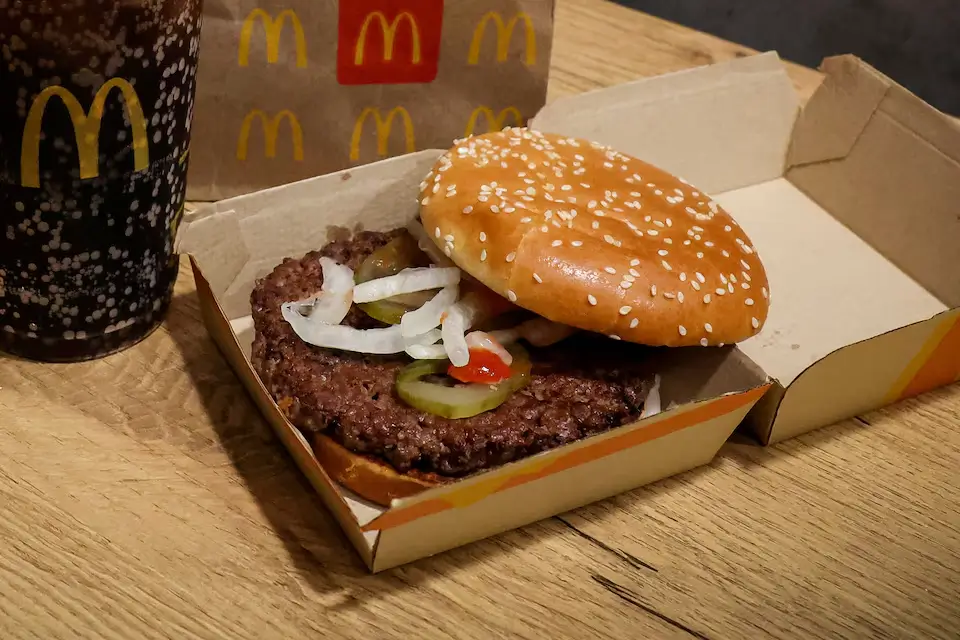A widespread E. coli outbreak linked to McDonald’s restaurants has triggered a cascading response across the U.S. fast-food industry, with major chains removing onions from their menus. The outbreak has already had significant consequences, raising concerns about food safety protocols and supply chain management.
E. coli Outbreak Impact: 49 Sickened, One Death Reported
- 49 people sickened
- One death reported
- Fresh onions identified as likely source
- Taylor Farms named as supplier of contaminated onions
Industry-Wide Response to E. coli Outbreak
The response to the outbreak has been swift and far-reaching across the fast-food industry. Major chains taking immediate action:
- Burger King removing onions from approximately 5% of locations
- Yum Brands (KFC, Pizza Hut, Taco Bell) pulling onions “out of abundance of caution”
- Taylor Farms recalls several batches of yellow onions from Colorado facility
McDonald’s Response to E. coli Outbreak
In an effort to contain the outbreak, McDonald’s has implemented substantial menu modifications across multiple states. The company’s quick response reflects lessons learned from previous industry outbreaks.
- Quarter Pounder removed from about 20% of U.S. restaurants
- Affected regions include:
‣ Colorado
‣ Kansas
‣ Utah
‣ Wyoming
‣ Parts of Idaho
‣ Iowa
‣ Missouri
‣ Montana
‣ Nebraska
‣ Nevada
‣ New Mexico
‣ Oklahoma
Business Impact
The financial implications of the outbreak are already becoming apparent. Wall Street has responded with caution, drawing parallels to previous food safety incidents that significantly impacted other chains.
- McDonald’s shares downgraded to “neutral” by Baird Equity Research
- Analyst David Tarantino warns of “major threat to consumer sentiment”
- Historical precedent: Previous outbreaks severely impacted sales at Chipotle (2015) and Jack in the Box (1993)
Ongoing Investigation into E. coli Outbreak and Food Safety
Federal authorities are conducting a thorough investigation into the source and spread of the contamination. While fresh onions have been identified as the likely culprit, investigators are leaving no stone unturned.
- USDA identifies fresh onions as likely outbreak source
- Investigation of potential beef contamination continues
- Initial reports to CDC began in late September
- E. coli risks higher with raw ingredients, as cooking kills bacteria in properly prepared beef
Consumer Response to E. coli Outbreak in the Fast-Food Industry
On the ground, customer reactions have been varied, highlighting the complex relationship between food safety concerns and brand loyalty. Some customers, like Charity Atkinson in Longmont, Colorado, continue to visit McDonald’s but are avoiding certain menu items.
“I’m hoping everything gets taken care of really soon, because my mom loves the Quarter Pounders with cheese,”
she noted.
- Some customers avoiding burgers but continuing to order other items
- Others switching to competitor restaurants
- Many expressing concern about food safety protocols
E. coli Outbreak and the Challenges of Food Safety in Fast-Food Industry
The incident underscores the interconnected nature of the fast-food industry’s supply chains and the importance of rapid response protocols.
- Fast-food chains often share supply chains
- Previous outbreaks have led to prolonged sales impacts
- Quick response crucial for maintaining consumer confidence
Although the full impact on customer trust and sales is still unknown, the industry’s prompt response to food safety problems shows an evolved strategy as investigations continue. The epidemic is a sobering reminder of the continuous difficulties in ensuring food safety throughout intricate supply networks and the vital necessity of taking prompt action when problems emerge.

